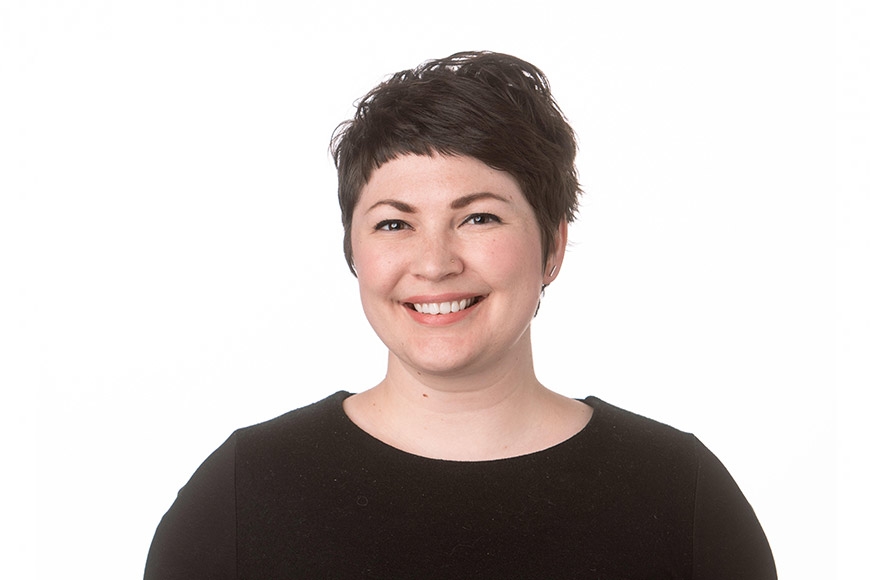The Anthropology of Healthcare
You won’t find anthropology alumna Monica Looze (BA ‘12) on a dig with a trowel and a brush—instead, she’s applying her skills in the clinical environment at the Mayo Clinic. After studying biological and cultural anthropology, Looze has been able to apply these niche skills to a field that incorporates all of her interests: service design.
From Wedding Bouquets to Product Design
After Looze graduated from the University of Minnesota in the midst of an economic recession, she knew academia wasn’t an option right away. She moved to New York for a stint as a wedding florist before realizing she wanted more. “I woke up one day and just decided, ‘this isn’t fulfilling,’” she says. “I started looking into what I could do with my creative side and anthropology degree.”
Looze stumbled upon service design—also referred to as experience design—and attempted to break into the field right away. She soon discovered that she needed a master’s degree in interaction design to complement her academic skills, which she tackled at Carnegie Mellon University. She then worked in product design in Seattle and in the Bay Area for companies such as Adaptive Path, which focuses specifically on service experiences, and Artefact, which focuses on digital product design and design strategy
This experience was also not as fulfilling as Looze had hoped. “Anthropology really teaches you to fight the good fight and root for the underdog, so selling screens and digital experiences for tech conglomerates was not what I had in mind [when I went into design],” Looze says. Finally, she found her current position at Mayo Clinic in Rochester, Minnesota.
Working in Health Care Innovation
As a service designer for the Robert D. and Patricia E. Kern Center for the Science of Health Care Delivery (formerly known as the Mayo Clinic Center for Innovation), Looze conducts research, interviews patients, and observes surgeries—then creates solutions for problems she finds. “I’m using all of my anthropological skills because the job includes qualitative and quantitative facets, and a deep understanding of culture, psychology, and human behavior,” Looze says.
On a day-to-day basis, Looze follows entire patient journeys in the field, researching areas that can be improved and then creating prototypes to help solve problems she identifies.
These prototypes can be anything from a digital map to new ways for patients and doctors to interact, she explains. Experiments are then conducted with these prototypes in the field to measure their efficacy and are then tweaked to improve the healthcare experience for patients and providers. “We just solve problems all day long,” she says.
Working on two to five projects at a time, Looze could be making a digital interface that visualizes patient facing data one day, synthesize research in the afternoon, and spend time with cancer patients and caregivers the next.
Her colleagues’ work ranges from designing building layouts to brain-surgery service experience optimization, to design projects that imagine what healthcare might be like 50 years in the future.
“There are so many different things we’re working on,” she says, mentioning that the skills she obtained from her time studying anthropology come in handy for almost everything she does at Mayo.
The All-encompassing World of Anthropology
Studying anthropology makes you a well rounded, creative thinker, says Looze. “I can think critically about things and bounce between talking about statistical significance with a PhD to talking to a patient to understand how they feel about things and what their experience is,” she says. “I’m using every facet of what I’ve learned.”
An understanding of theory in cultural anthropology is also useful, Looze says. She always considers who the product is helping or hurting in any given situation, and what the power structure is. “From an ethical perspective, it really has shaped how I think about things.”
In grad school, she was deemed the “idea person” due to her attempts to try to tie multiple things together and consult theory into her designs.
What really made Looze take the industry route over academia was her motivation to make things that haven’t been made before and create solutions that help people. “There’s something important about actualization and commercialization,” she said, that she wouldn’t have gotten from years of research or teaching.
That being said, Looze believes that everyone studying anthropology should do research at some point, due to the many valuable skills that come with organizing and conducting a study with people. “I had to write an IRB [Institutional Review Board] protocol [at Mayo], and I would have never known how to do that if I hadn’t written a thesis for my undergraduate degree,” she says.
While minoring in design or business may have made the transition to her current position a little smoother, Looze is confident that anthropology helped get her where she is today and appreciates its versatility. “With an anthropology degree, if you planned it strategically, you could get a job at Google,” she says.
As far as design, she’s proof the two disciplines go hand in hand, and would love to see more designers who have the rigorous, rich understanding of humans that comes from anthropology. “Service design would really benefit from people who think critically and have that theoretical background,” she says. “It makes you more considerate of the people you’re designing for.”
This story was written by an undergraduate student in CLA.



